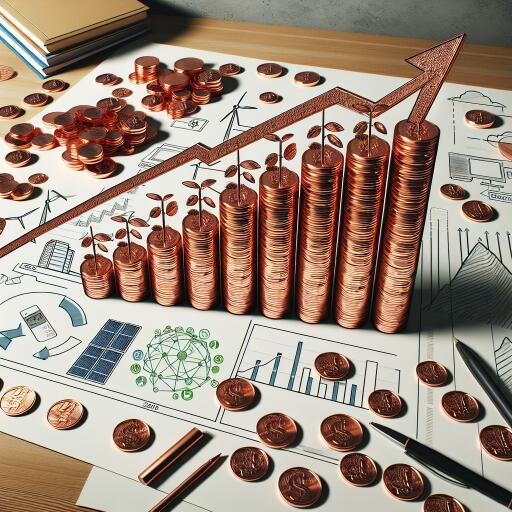Copper Prices Reach 2-Year Highs Fueling Green Energy Transition
As the world increasingly shifts towards renewable energy, the demand for copper has surged, propelling its price to near two-year highs. This essential metal, known for its significant role in electrical conductors, is not only foundational in traditional industries like automotive and telecommunications but is also key to the burgeoning sustainable energy sector. Solar panels, wind turbines, and the future grid all require substantial amounts of copper, making it a critical component of the green transition.
Anglo American, a mining conglomerate with extensive copper operations in South America, recently made headlines when it declined a staggering $39 billion acquisition proposal, signaling confidence in the metal’s value trajectory. This decision underscores the market’s bullish outlook on copper, driven by robust demand stemming from both established sectors and renewable energy technologies.
Eli Tesfaye, Chief Market Strategist at RJO Futures, pointed out the direct correlation between the green transition and the rising demand for copper. Tesfaye wasn’t surprised by Anglo American’s move, interpreting it as a strategic decision to capitalize on anticipated price increases. This expectation is not unfounded, as initiatives to ramp up clean energy capabilities necessitate substantial copper investment.
The conversation around copper’s pivotal role in the clean energy transition extends to academic circles. Barbara Arnold, a professor in the department of energy and mineral engineering at Penn State, highlights the metal’s indispensability in expanding renewable energy infrastructure. From wind turbines to solar farms and the essential integration of battery storage systems, copper’s conductivity and versatility make it a cornerstone material.
However, the copper market faces challenges on the supply side. Despite the soaring demand, copper production is struggling to pace due to several factors. Existing mines are grappling with diminishing ore grades, complicating extraction and processing efforts. Moreover, the procedural and regulatory hurdles in bringing new mines to fruition can extend over a decade, further straining supply lines.
Phillip Streible, chief market strategist at Blue Line Futures, adds another dimension to the supply challenge. Increased environmental and safety regulations, while crucial for sustainable mining practices, inevitably slow down copper production. This alignment towards efficiency and conservation has inadvertently contributed to a tightening in copper supply.
The dynamic of surging demand against a backdrop of restrained supply encapsulates the copper market’s current state. As the world leans into a cleaner, more sustainable energy paradigm, copper’s value and significance will likely continue to climb. Mining companies like Anglo American are positioned to navigate this landscape, balancing immediate opportunities against the long-term horizon of the copper market’s growth potential.
The unyielding demand for copper, coupled with the intricate challenges in boosting supply, presents a complex but promising outlook for the metal’s future. In the shift towards renewable energy, copper emerges not just as a commodity, but as a critical ally in achieving global sustainability goals.
